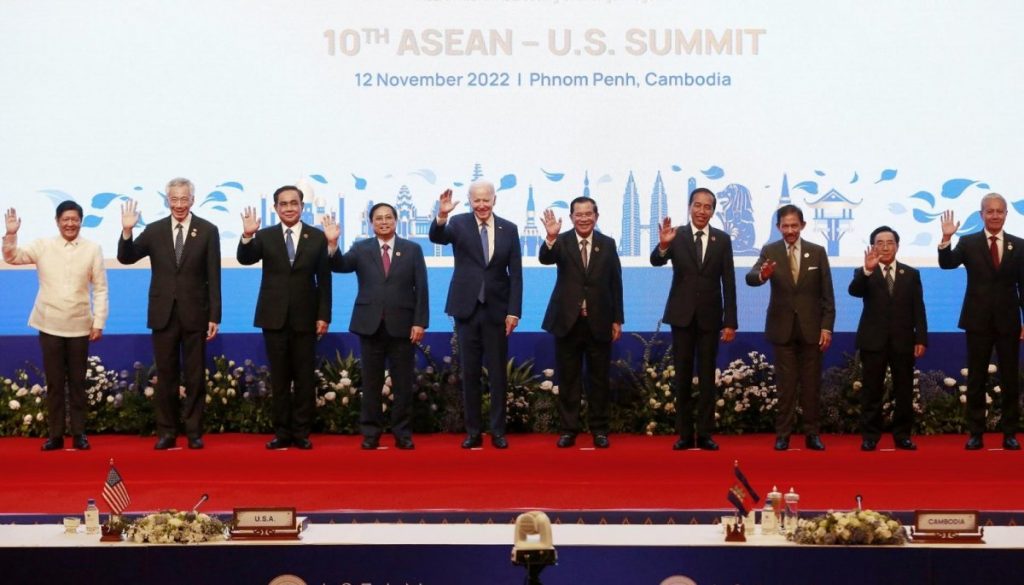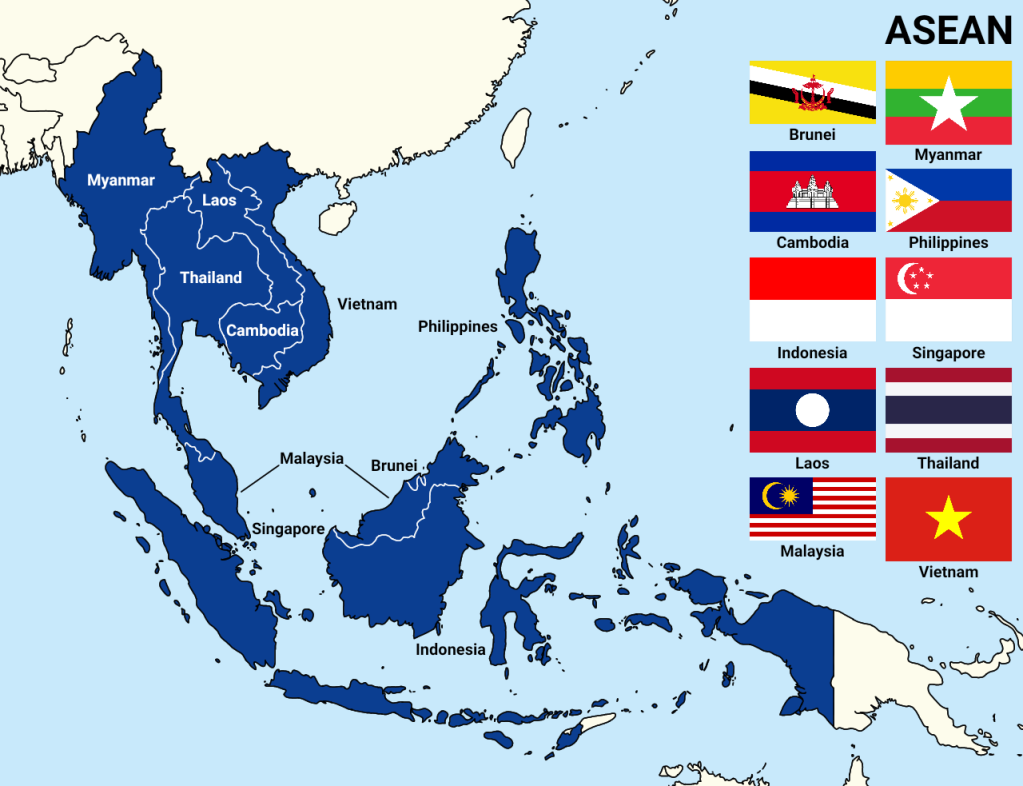By Nicolás Promanzio
This Sunday ended the 40th and 41st summit of the Association of Southeast Asian Nations (ASEAN), held for 4 days in Cambodia. ASEAN is an intergovernmental organization that is on course to become the fourth largest economy in the world in the coming years and already has more than 700 million inhabitants.
ASEAN is currently made up of Indonesia, Vietnam, Thailand, Singapore, the Philippines, Myanmar, Malaysia, Laos, Cambodia, and Brunei. In this summit, the admission of East Timor as the eleventh member of the organization was also agreed.
Although the summit went viral due to Joe Biden confusing “Cambodia” with “Colombia,” the event itself was one of the most important in recent years, since it put the countries of Southeast Asia in a difficult dilemma between the United States and China.

The Prime Minister of Cambodia and host president, Hun Sen, declared that, during the four days of duration, a total of 70 final documents and declarations that embrace the pillars of ASEAN were approved and indicated, also endorsing several cooperation frameworks with its partners. of dialogue.
He highlighted at the summit the intervention of Indonesian President Joko Widodo, the organization’s new president, who promised that he would prevent Southeast Asia from becoming the front line of a new Cold War between the United States and China. He assured that the region will not become a tool of any power.
For Widodo, the region must be dignified and “defend the values of humanity and democracy. […] ASEAN must become a peaceful region and an anchor of global stability, consistently uphold international law and not be a tool for any power. […] ASEAN must not let the current geopolitical dynamics bring a new Cold War to our region.”
Another outstanding aspect was the case of Myanmar, which, despite being part of the organization, no representative of the military junta was invited due to its lack of commitment to resolve the crisis that the country is experiencing after the 2021 coup, a condition requested by the Biden government to attend the event.
JOE BIDEN MADE ASEAN A STRATEGIC PARTNER
The President of the United States was present at both summits. In ASEAN, he expanded relations with the organization to a “comprehensive strategic partnership” on Saturday, promising millions in aid to the bloc and the goal of containing the growth of China’s influence in Southeast Asia.
“ASEAN is at the center of my Administration’s strategy in the Indo-Pacific and we continue to strengthen our commitment,” said the US president. In addition, he proposed a cooperation to face challenges related to food security, climate change and security threats, in search of a “free, open and prosperous” region.

Although Biden has strongly handed over the sovereignty of the United States to that of China, undoing many of Trump’s policies that contained the Asian giant, the geopolitical dispute between the two countries for control of the Pacific remains intact.
Biden wants to assert US influence in Southeast Asia, while China naturally wants to keep these countries as its satellites, both political and commercial. In the middle, these countries are internally destroyed by artificial cracks created from Washington and Beijing, with the aim of imposing like-minded governments that change the balance in ASEAN.
Along with ASEAN, the East Asia Summit was held, with the participation of Russian Foreign Minister Sergey Lavrov. The official confirmed the absence of consensus to publish a document due to the situation in Ukraine: “There was no agreement. The United States and its allies insist on including unacceptable language regarding the situation in Ukraine.”
The East Asia Summit was also attended by Biden and representatives from China, India, Japan and South Korea, New Zealand and Australia.
Biden met that same day with Japanese Prime Minister Fumio Kishida and South Korean President Yoon Suk-yeol to discuss cooperation in the Indo-Pacific and the threat of North Korea’s ballistic tests, although without progress on this aspect.
On the other hand, at the same time as the summit, the United States was conducting naval exercises with its partners in the group known as QUAD (Australia, India and Japan) in the Philippine Sea, east of Taiwan. Meanwhile, China sent 36 light fighters and bombers near Taiwan.
With information from La Derecha Diario

